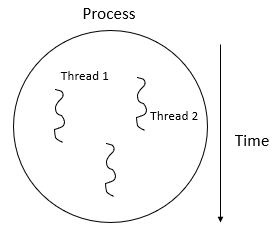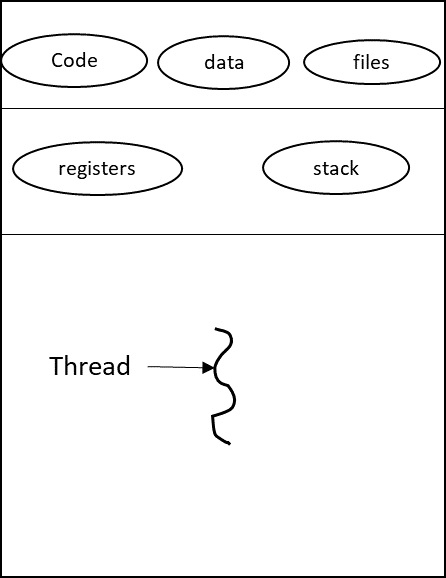
 Data Structure
Data Structure Networking
Networking RDBMS
RDBMS Operating System
Operating System Java
Java MS Excel
MS Excel iOS
iOS HTML
HTML CSS
CSS Android
Android Python
Python C Programming
C Programming C++
C++ C#
C# MongoDB
MongoDB MySQL
MySQL Javascript
Javascript PHP
PHP
- Selected Reading
- UPSC IAS Exams Notes
- Developer's Best Practices
- Questions and Answers
- Effective Resume Writing
- HR Interview Questions
- Computer Glossary
- Who is Who
What is the concept of thread?
A thread is a lightweight of process and is a basic unit of CPU utilization which consists of a program counter, a stack, and a set of registers.
Given below is the structure of thread in a process −

A process has a single thread of control where one program can counter and one sequence of instructions is carried out at any given time. Dividing an application or a program into multiple sequential threads that run in quasi-parallel, the programming model becomes simpler.
Thread has the ability to share an address space and all of its data among themselves. This ability is essential for some specific applications.
Threads are lighter weight than processes, but they are faster to create and destroy than processes.
Let us see the single thread model which is as follows −

Now, let us see about classical thread model which is as follows −
A process contains a number of resources like address space, open files, accounting information, etc. In addition to these resources, a process is also having a thread of control. For example, program counter, register contents, stack.
The idea of threads is to allow multiple threads of control to execute within one process. This is often called multithreading and threads are also known as lightweight processes.
Since threads in the same process share state and stack, switching between them is less expensive than switching between separate processes.
Individual threads within the same process are not completely independent but they are cooperating and all are from the same process.
The shared resources make it easier between threads to use each other’s resources. A new thread in the same process is created by a library routine like thread_create. Similarly, thread_exit terminates a thread.

